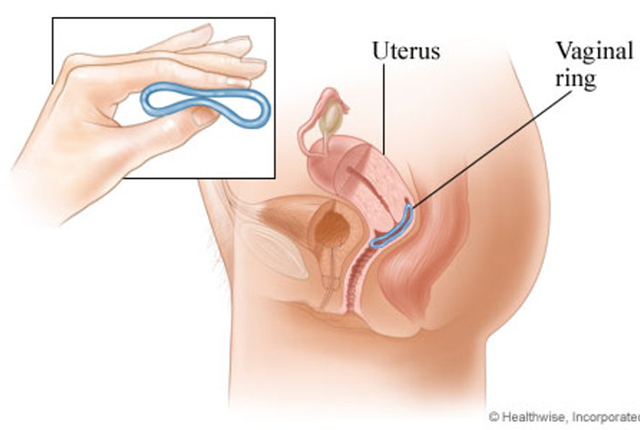Social harms impede ring response

Roselyne Sachiti in Chicago, US
New findings presented at the HIV Research for Prevention 2016 conference in Chicago, United States have revealed how social harms such as gender based violence, especially intimate partner violence has resulted in some women under the ASPIRE study not adhering to the vaginal ring.
According to the findings reported here, by a team led by Dr Thesla Palanee-Phillips of the Wits Reproductive Health and HIV Institute in Johannesburg, South Africa, out of the 2 629 women enrolled in ASPIRE study – a large HIV prevention trial of a monthly vaginal ring – 5 percent reported that they were subject to and feared intimate partner violence.
The research findings said those who stopped using the ring were 2,5 times unlikely to use it if they had experienced a form of intimate partner violence.
However, the use of the ring improved after the abused women disclosed the events to study staff, proving how counselling and support could improve adherence in these women.
Dr Palanee-Phillips who is the Director of Network Trials at the Wits Reproductive Health and HIV Institute said violence against women remains a significant challenge globally, particularly so in communities where they conducted ASPIRE.
“Disclosing exposure to intimate partner violence was a major step forward for many of these women, who are often too afraid to talk openly, and an acknowledgement to trial sites who created safe environments women felt comfortable to seek help from,” said Dr Palanee Phillips.
Women mostly likely to report intimate partner violence or related harms during ASPIRE were between the ages of 18 and 21 when they enrolled, had a new primary partner or not disclosed study participation or ring use to their primary partner.
The analysis was based on behavioural and demographic data collected when participants first enrolled into ASPIRE and questions asked of women at different time points during the study, as well as information from participants who came forward on their own. Researchers also looked at drug levels in blood as a measure of adherence.
She said more research is needed to determine strategies to mitigate low adherence in the context of intimate partner violence and other social harms in future studies of female controlled prevention methods.
“Looking ahead, we need to find simple ways to empower women with support to be adherent to HIV prevention strategies in the face of potential exposure to intimate partner violence.
“We need to ensure that women feel comfortable reporting social harms in studies and in seeking help so that we can better understand how to protect all women against HIV infection,” added Dr Palanee Phillips.
She said to address this challenge in South Africa, they were working with Sonke Gender Justice in Johannesburg.
Another report released by the National Institute of Allergy and Infectious Diseases also confirmed how violence and social harm were associated with low adherence.
The report said while most of the women found out that the ring did not negatively affect physical sex, some said they were continuously pre-occupied with how their partners would react if they felt or discovered the ring.
To address this issue, some women limited sexual activities that they believed might heighten their partners’ awareness of the ring, such as certain sexual positions and receptive oral or digital sex.
Because women who face intimate partner violence and other social harms more often find it difficult to adhere to clinically proven once-daily antiretroviral drug Tuvada as Pre-exposure prophylaxis or PrEP, researchers investigated the connection between consistent use of the ring and these issues.
Additional new data revealed that a majority of women – 64 percent – disclosed the use of the ring to their male partners at the outset of the study, while 13 percent of study participants never revealed that they were using the ring.
The investigators led by Lulu Nair of the Desmond Tutu HIV Centre at the Cape Town University in South Africa, found that not disclosing nor concealing the use of the ring, affected a women’s adherence to the product.
Researchers led by Ariane van der Straten of RTI International also found out that women’s concerns about using the experimental vaginal ring for HIV prevention decreased significantly over the course of the study.
During clinical visits, the women where asked how worried they were about having the vaginal ring inside them every day for the past year. While 29 percent of women reported this concern at the start of the study, only four percent of participants did so at their final follow up at clinic visit. Specific concerns related to use, health, hygiene, sexual enjoyment and social approval also decreased significantly between the start and the end of the study.
ASPIRE – a study to prevent infection with a ring for Extended Use or MTN-020, was a Phase III trial designed to determine whether a vaginal ring containing an antiretroviral (ARV) drug, Dapivirine is safe and effective in protecting women against HIV when used for a month at a time.
The trial was led by the National Institutes of Health – funded Microbicides Trials Network and enrolled women between 18 and 45 years at 15 trial sites in Malawi, Uganda, South Africa and Zimbabwe. The Dapivirine ring was developed by the International Partnership for Microbicides, which also conducted the Ring Study, a Phase III sister study.
ASPIRE’s primary results, which were reported earlier this year found the Dapivirine ring both safe and helped protect against HIV with risk being reduced by 27 percent overall.
Additional analyses have since found the level of HIV protection is at least 56 percent and may be as high as 75 percent or more when the ring is used most consistently.
Research on the ring continues in the HOPE study and investigators will collect both quantitative and qualitative data from women at risk for HIV prevention. All participants in HOPE will receive access to a package of HIV prevention services, including condoms, partner testing and counselling, and will be able to stay in the study regardless of whether or not they choose to accept the ring after their initial clinic visit. Study investigators said they believe this will shed light on the critical questions of whether participants like using the ring and why.
This potential for women to suffer social harm and violence by sexual partners, along with other qualitative data from HIV prevention studies, suggest that some women may prefer methods of HIV protection undetectable by sexual partners.
Feedback: [email protected].










Comments